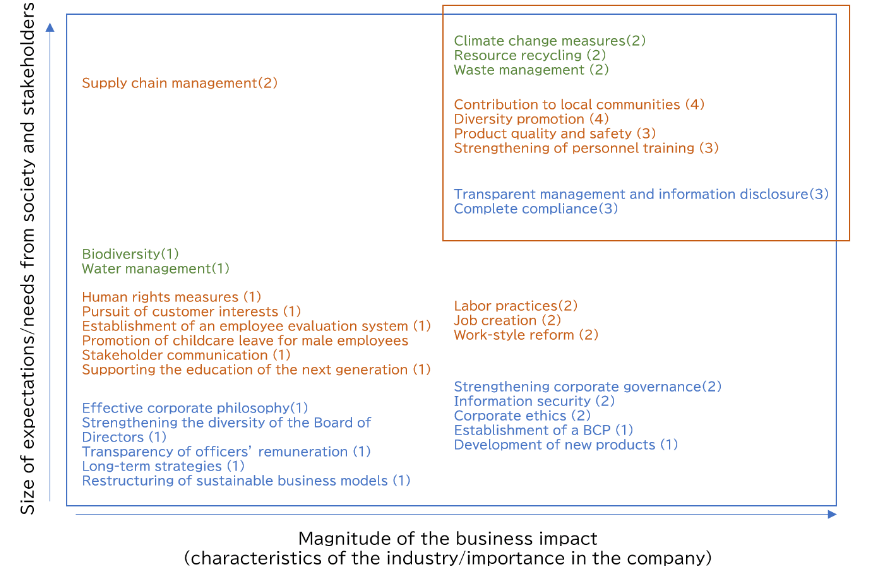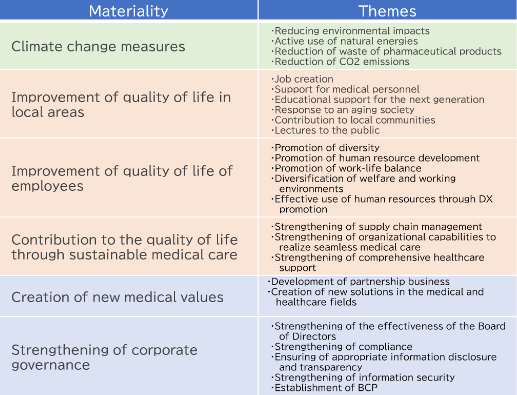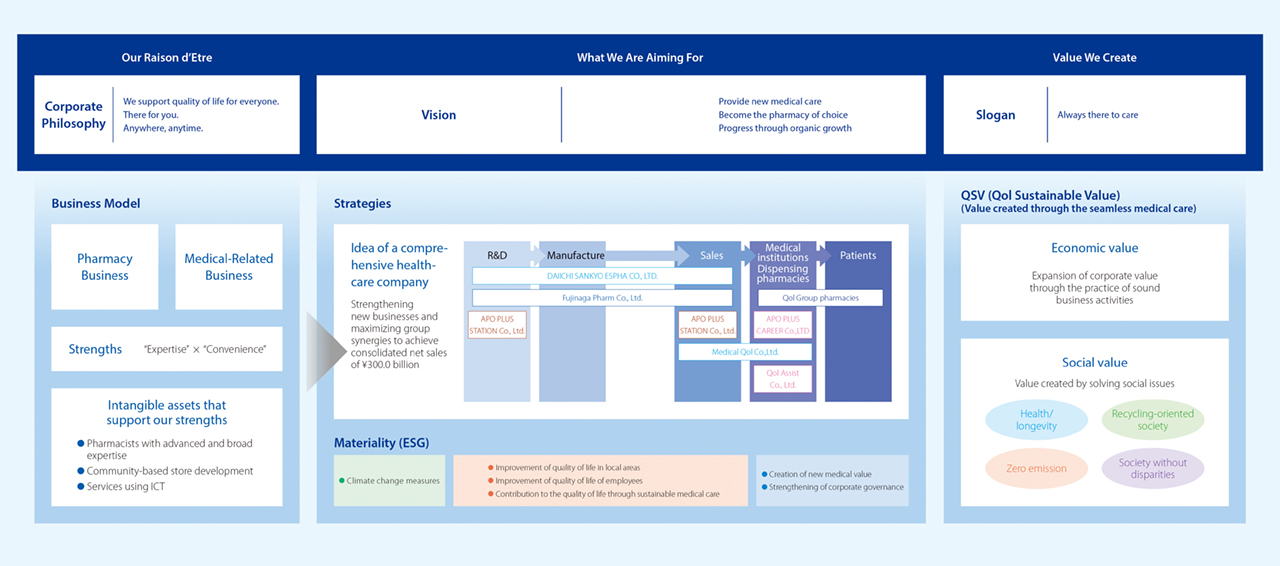Materiality (important issues)
Value Creation Stories
Basic Views
To deal with social, environmental and other issues surrounding sustainability in the realization of a sustainable society, the Group has identified material (important) issues. Going forward, the Sustainability Committee will take the lead in setting goals and action plans for each material issue and advancing the activities.
Process to specify material issues
Step 1. Recognizing ESG issues
After defining material issues as “ESG issues that should be given the most importance in corporate management,” we listed more than 500 ESG issues from various perspectives. Then, based on three perspectives of "importance to the Qol Group,” “importance to stakeholders” and “importance in light of the characteristics of the industry,” material issues are further identified for each area.
“Internal interviews”
Committee members and Group employees identify material issues related to our businesses. Then, they sorted out both positive and negative aspects on the value chain and organized the issues to be considered.
“Stakeholder interviews”
For each major stakeholder group (customers, employees, investors, etc.), we identified and organized important items, priority issues and expectations for the company.
“Survey on industrial characteristics”
Combined with industry-specific materiality analyses and global sector issues such as the Sustainability Accounting Standards Board (SASB) and the Task Force on Climate-related Financial Disclosures (TCFD), we identified industry-specific issues.
Step 2. Screening identified ESG issues
The 53 items identified from the three perspectives of “internal interviews,” “stakeholder interviews” and “surveys on industrial characteristics” were further screened and 31 items were listed.
Step 3. Mapping ESG issues
The 31 items listed in Step 2 were mapped with two perspectives of materiality (axes): “the size of expectations/needs from society and stakeholders” and “the magnitude of the business impact.”

Step 4. Identifying material issues
We visualized and reorganized the issues using the Materiality Map and identified six material issues. We will review each of the issues based on the PDCA cycle and revise and update them periodically. We are planning to set KPIs in the future.

Value Creation Story
Taking on the three challenges for new medical care, pharmacies that continue to be chosen and endless growth, we will work on development of seamless medical care to realize a healthy, prosperous and sustainable society.

